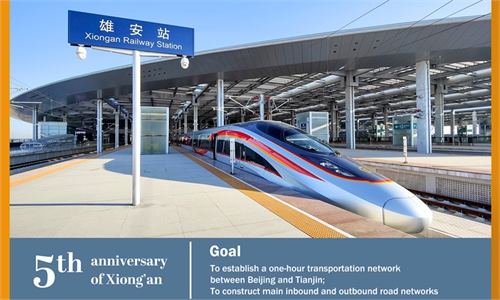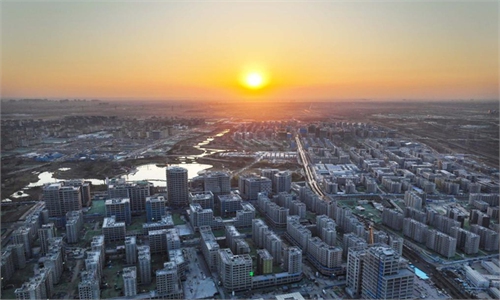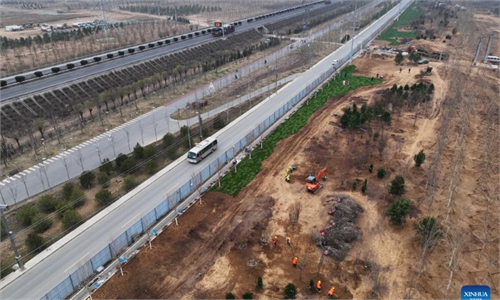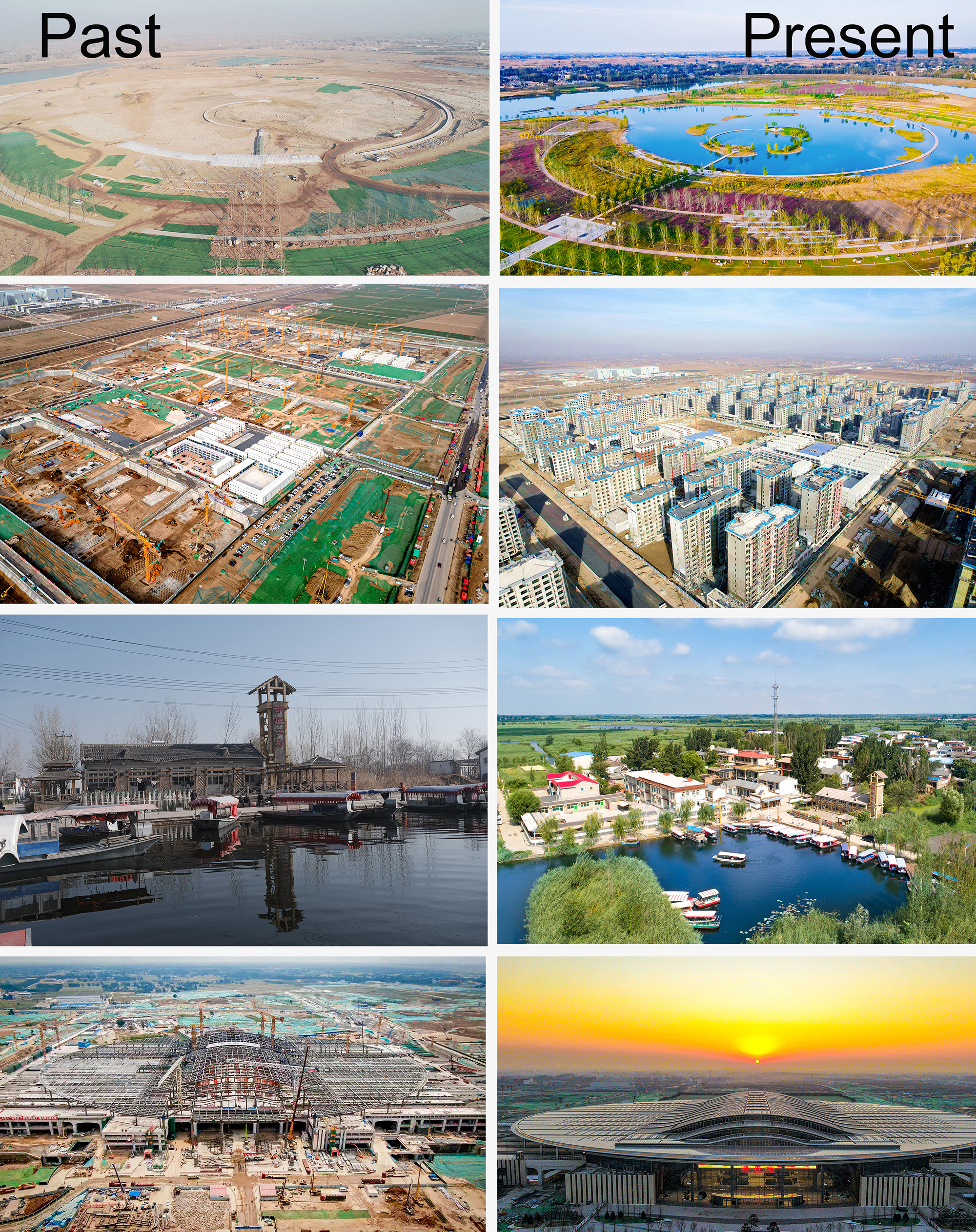
Photos: Courtesy of CRCC.
Five years after China announced the establishment of the Xiong'an New Area, a 1,770 square kilometer site in North China's Hebei Province about a two-hour drive from Beijing, the foundations of the new "dream city" are taking shape in a miraculous manner, with construction cranes dominating the skyline, new modern buildings springing up one after another, and a magnificent landscape created with trees, forests and wetlands that echo the city's focus on innovation and green development.
When the blueprint for Xiong'an, which was described by the top leadership as "a strategy crucial for a millennium to come," was revealed on April 1, 2017, it attracted wide attention from around the world as many praised China's boldness in launching such a massive project, literally building a whole new metropolis from the ground up. Others wondered if China can make another miracle with its vision for future living and development, after two successful precedents, the Shenzhen Special Economic Zone and the Shanghai Pudong New Area, which led the whole country into where it is today.
In many ways, Xiong'an represents China's vision of its next stage of development in several areas. It is expected to become a high-level socialist modern city that is green, low-carbon, intelligent, livable and relatively competitive, by the end of 2035. By the middle of this century, it should become an important part of the world-level Beijing-Tianjin-Hebei city cluster.
In interviews with the Global Times, local residents, construction workers, companies, authorities and experts described the extraordinary changes Xiong'an has seen over the past five years despite a series of challenges. It is a sleepless construction site and a stunning view into futuristic urban living that embodies efficiency, strength, resilience and farsightedness of the Chinese system.
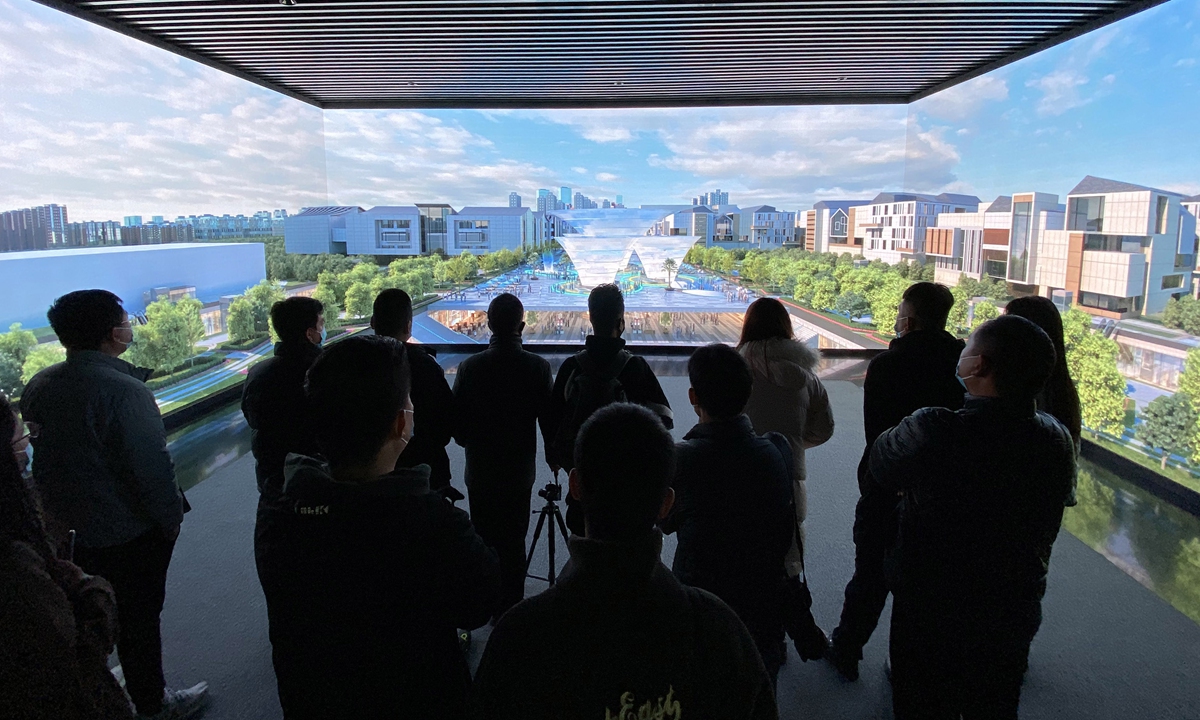
People visit a high-tech experience center in Rongdong district, Xiong'an New Area, North China's Hebei Province, on December 10, 2021. Photo: IC
Xiong'an speed
Now, five years after the blueprints were finalized, numerous changes are taking place on this land that show to the world China's orderly but unswerving push to make of its dream city.
Zhang Kun, a 35-year-old engineer at the China Railway 12th Bureau Group Co under the China Railway Construction Corp (CRCC), was one of the chief engineers for the project of the Xiong'an Railway Station. During his two years of work, from late 2018 to 2020, he sensed the transformation of Xiong'an from a rural-looking place into a modern city.
"When I first came to Xiong'an from a previous project in Chongqing, I felt a big gap coming from a big city to a rural area. At that time, I saw mostly villages and agricultural land in Xiong'an. Now, roads are built, resettlement houses are built, assistant facilities and skyscrapers are also emerging. The changes are huge," Zhang told the Global Times.
Ren Dakai, head of the Xiong'an New Area Digital Transportation Lab, recalled that the most obvious change in Xiong'an is the convenient transportation thanks to the increasing high-speed trains that are commuting between Beijing and Xiong'an each day. Besides, the accommodations are much better with buildings designed with modern concepts.
Now, living in a relocated house in the east of Rongcheng, part of Xiong'an, Ren is quite satisfied with the community that is fully equipped with facilities like gyms and children's playgrounds. Within 3 kilometers there are educational facilities like kindergartens and elementary schools, as well as a large park, he said, describing Xiong'an as the "last place" for him to fight for a career although he just settled in the region about two years ago.
What those people experienced are aspects of numerous changes that have taken place or are ongoing in the Xiong'an New Area. Since its establishment, Xiong'an has started 177 key projects with a total investment of 618.4 billion yuan ($97.4 billion). In peak times, more than 200,000 workers are employed on the construction projects, according to data from Xiong'an's management committee.
Many landmark infrastructure projects have already been completed. Trains have begun to commute on the intercity railway line between Xiong'an and Beijing after the Xiong'an Railway Station was constructed and 939 of resettlement homes in the Rongdong area have been finished. The general formation of road network, ecological corridors and waterways have also taken form.
As of March, central-level state-owned enterprises had established more than 100 branches in Xiong'an. Registered companies that show capital sources in Beijing amounted to 3,600, accounting for about 80 percent of the region's overall investment, according to media reports.
A frequently mentioned characteristic of Xiong'an's construction is fastness, which people summarized with the phrase "Xiong'an speed." It is both correct and incorrect, experts said, as Xiong'an's overall planning has been very orderly and careful, while the actual realization of its blueprint has been faster than people's expectations, a reflection of not only China's efficiency in carrying out plans, but also a testimony of the country's technological strength which has helped shorten implementation times.
Take the Xiong'an Railway Station as an example. It took only about two years for the 475,200 square meter station to complete construction, setting a record in terms of construction speed for stations of a similar scale. According to Zhang Kun, it usually takes three years for such a building to be constructed in China.
That speed is not rare in the construction of Xiong'an's infrastructure. When building the Xiong'an Citizen Service Center, 5,000 workers from the China State Construction managed to complete 50,000 meters of welding work in just 20 days, while installing 12,200 tons of steel frames in more than three weeks, about two or three times faster than normal speed, the company said.
According to experts and industrial insiders, the Xiong'an speed is made possible by careful planning and technological progress. For example, Zhang Kun revealed that when his team was constructing the Xiong'an Railway Station, they changed the norm of setting "five departments and one office" to "nine departments and two offices." What was added was the scientific division to push for technological upgrade and intelligent construction.
According to Zhang Kun, the CRCC set up several technical workshops to apply cutting-edge technologies to the project's construction, such as welding robots, intelligent steel processing equipment, among others, which helped shorten the time of the project.
Zhang Gui, secretary general of the College of Beijing-Tianjin-Hebei Collaborative Development under Nankai University, told the Global Times that Xiong'an's development is generally in line with its original plan.
"Compared with many regions, Xiong'an's planning is complete and scientific and took a relevantly long time. This makes afterward implementation much smoother," he said.
High-tech Xiong'an
Apart from stressing speed, China is also pouring resources into the region to foster its high-tech industries, from 5G and autonomous driving, to cloud computing and blockchain.
Since the establishment of the Xiong'an New Area, more and more 5G technologies have been implemented and application scenarios such as 5G smart robots, smart buses, and parks have been continuously enriched. For example, the parking lot alongside the Xiong'an Railway Station was built into a pilot zone of self-driving cars and Internet of Vehicles.
According to Ren, autonomous driving technologies, which he is now dedicated to, have accelerated in Xiong'an from the initial test phase when tech firms like Baidu conducted its autonomous driving road test based on a 5G network environment in 2018.
"Compared with other cities, Xiong'an is like a blank sheet of paper. New technologies such as 5G, artificial intelligence, and the Internet of Things are more feasible to implement. It can give full play to the advantages of these technologies and build a smart new city," Ren said.
Zhang Gui also praised Xiong'an's planning as a vivid display of China's wisdom, as the country showed the world a "Chinese model" of what a modern city is like, as well as where China's future economic momentum lies.
"Xiong'an's planning is a manifestation that China no longer just focuses on city scale, but is seeking establishment of new modern cities with features like low-carbon, intelligent, livable and high-quality development," he said. "It is an epitome of a new start for a new era."
Also, the economist stressed that Xiong'an represents a model of China's modernization in an all-around way, instead of just focusing on certain city functions.
Significance to the world
Experts also noted that Xiong'an can play to their economic strength as the world's economic situation evolves, thus making contributions to China's economic growth as well as global industrial chains.
According to Zhang Gui, the trend of regionalization is increasingly rising against the background of globalization development, such as forming of the Regional Comprehensive Economic Partnership (RCEP) trade bloc. Therefore, Xiong'an should find its position in such new global economic pattern and strive to participate in relevant industrial chains.
For instance, it will actively absorb and gather innovative factor resources in the world and lay out high-tech industries from a high starting point, after undertaking certain non-capital functions from Beijing, he said.
Furthermore, as globalization is shifting from a model of bulk commodity trading to services trading, Xiong'an can explore the construction of a digital commerce development demonstration area, establish digital trade development rules in line with national conditions, as well as participate in the formulation of international trade rules and agreements for data assets both in China and abroad with its booming digital economy, Zhang Gui said.
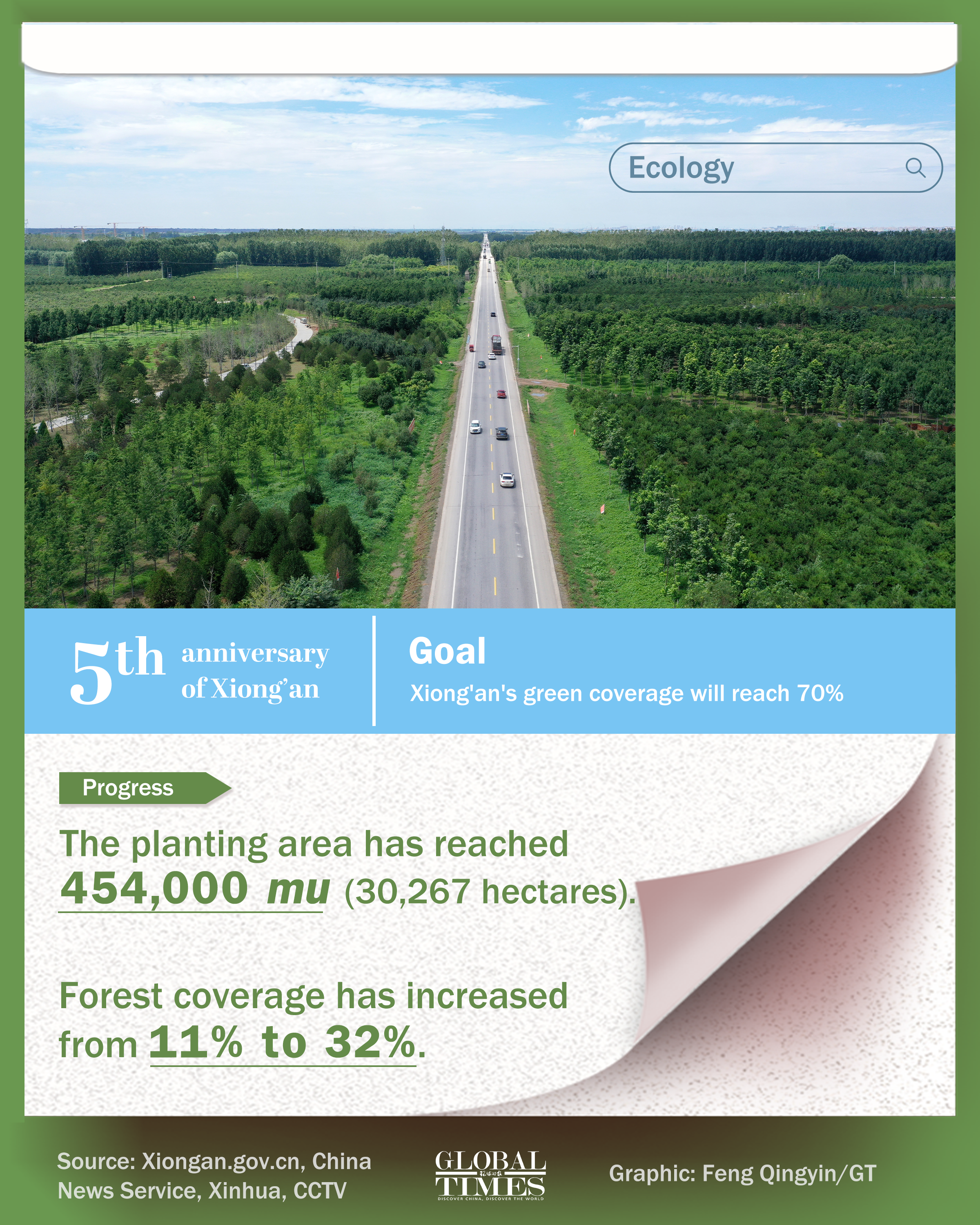
The 5th anniversary of Xiong'an New Area Editor: Yu Tianjiao, Zhao Jun and Zhang Mingyue/GT Graphic: Feng Qingyin/GT
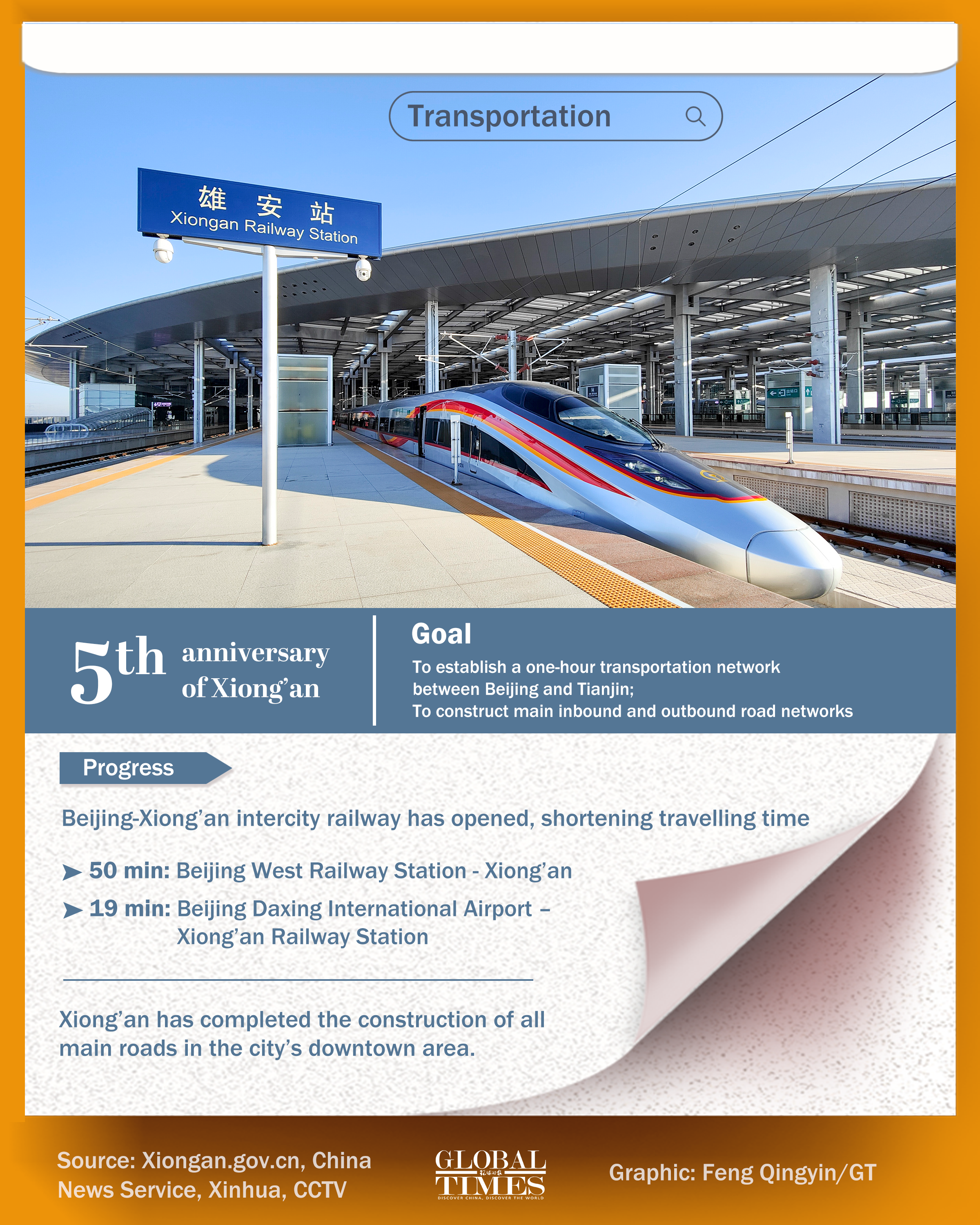
The 5th anniversary of Xiong'an New Area Editor: Yu Tianjiao, Zhao Jun and Zhang Mingyue/GT Graphic: Feng Qingyin/GT
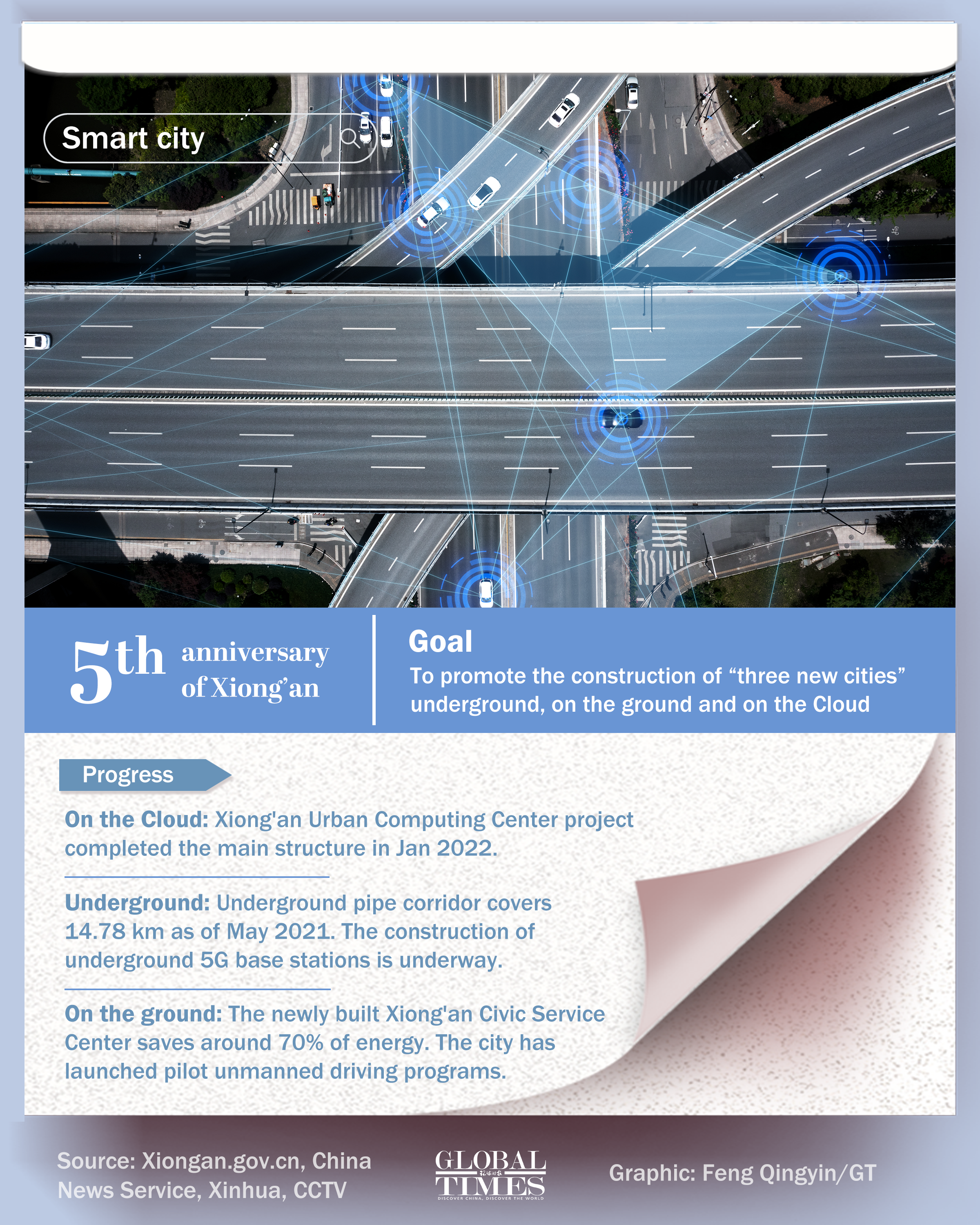
The 5th anniversary of Xiong'an New Area Editor: Yu Tianjiao, Zhao Jun and Zhang Mingyue/GT Graphic: Feng Qingyin/GT
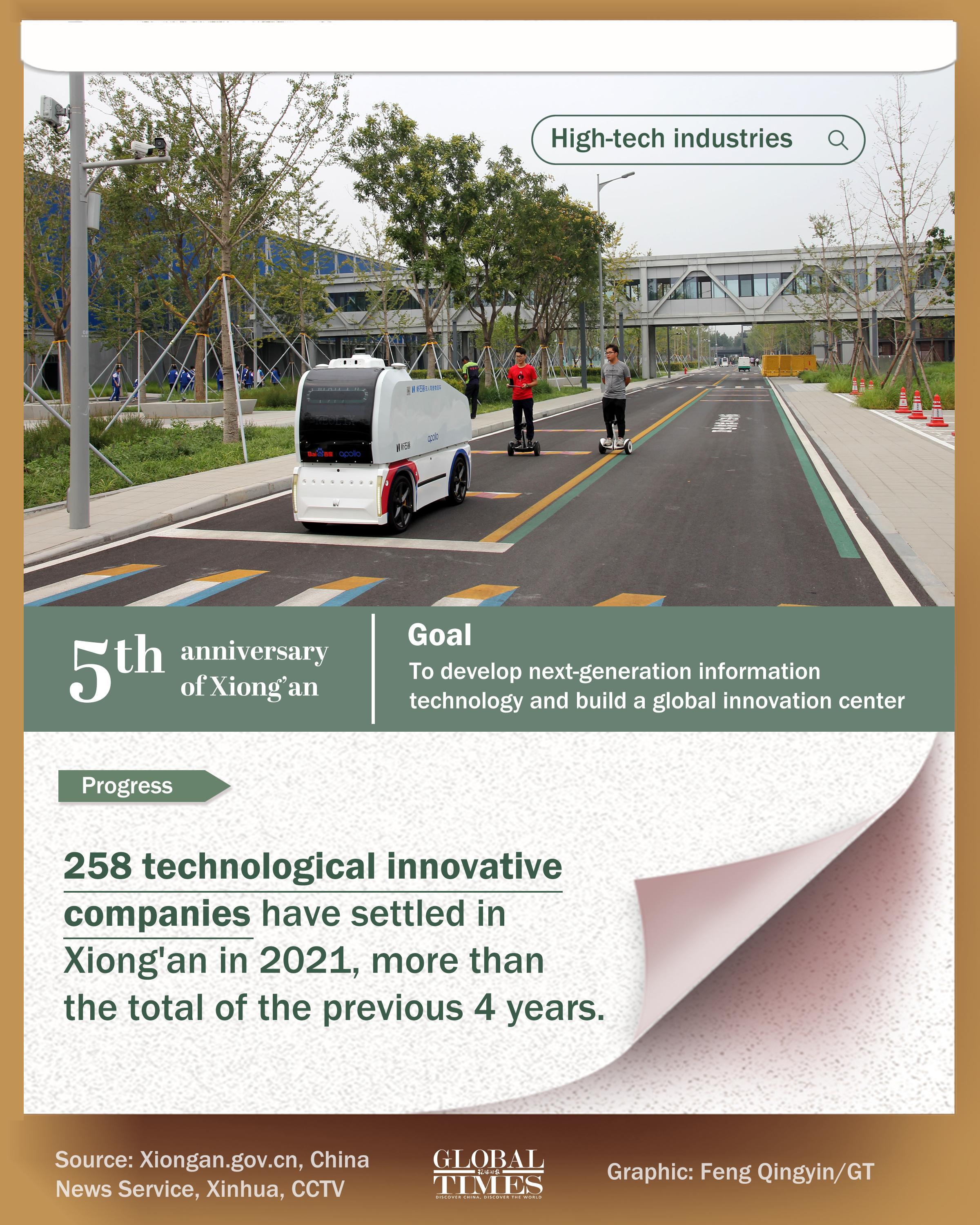
The 5th anniversary of Xiong'an New Area Editor: Yu Tianjiao, Zhao Jun and Zhang Mingyue/GT Graphic: Feng Qingyin/GT
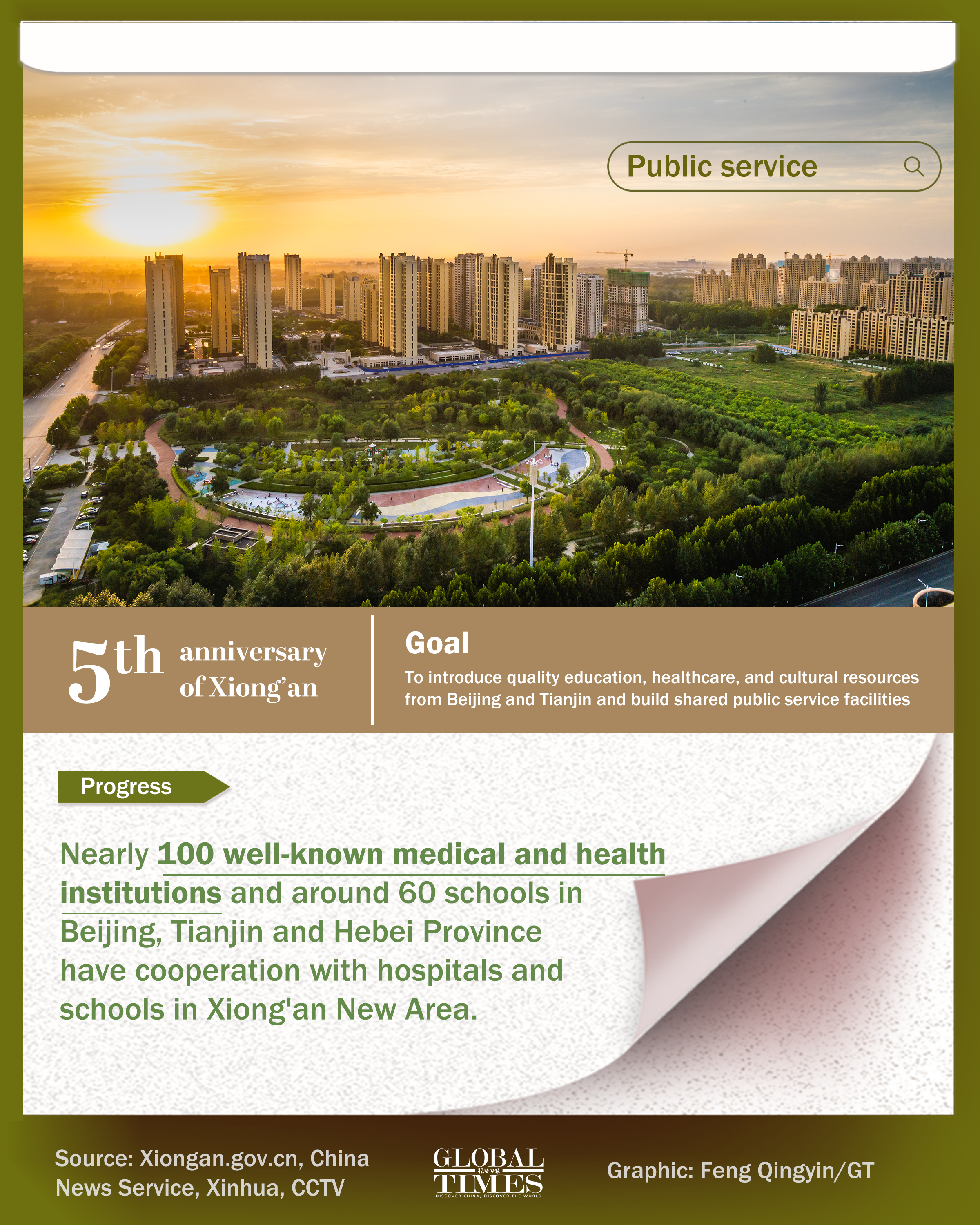
The 5th anniversary of Xiong'an New Area Editor: Yu Tianjiao, Zhao Jun and Zhang Mingyue/GT Graphic: Feng Qingyin/GT
